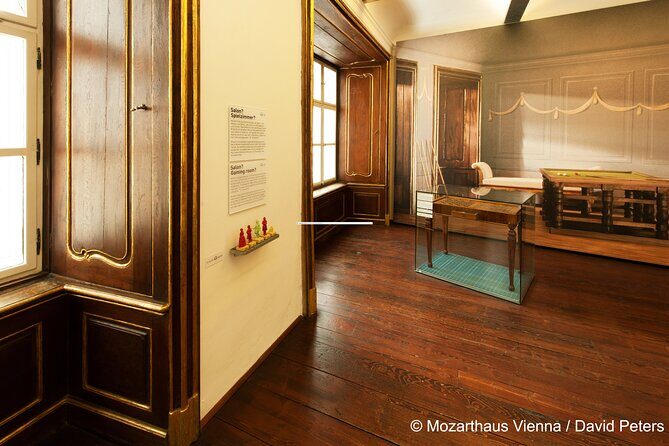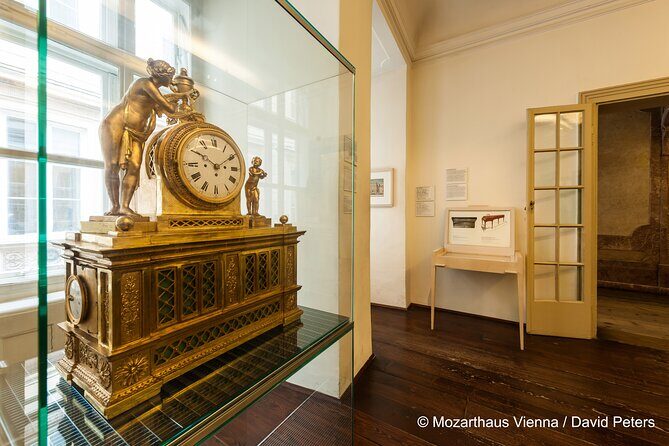Physical Address
304 North Cardinal St.
Dorchester Center, MA 02124
Physical Address
304 North Cardinal St.
Dorchester Center, MA 02124

Discover the history and charm of Mozart’s Vienna apartment with this admission ticket. Learn what to expect, costs, and tips for a memorable visit.
Introduction
Visiting Mozarthaus Vienna offers a chance to step into the life of one of classical music’s most revered figures. This attraction, claimed to be the only preserved residence of Wolfgang Amadeus Mozart, provides a close look at where he lived during some of his most productive years. The experience is guided by detailed exhibits spread across three levels, showcasing original manuscripts, personal artifacts, and insights into Mozart’s time in Vienna.
One aspect that travelers seem to appreciate most is the chance to walk through the very rooms where Mozart composed some of his greatest works—like The Marriage of Figaro and Don Giovanni. The combination of historical context and musical treasures makes this a captivating stop for music lovers and history buffs alike. However, the overall impression is that the museum offers a modest but meaningful glimpse into Mozart’s life, with some visitors wishing for more authentic furnishings and room reproductions.
If you’re after an educational, culturally rich experience that’s accessible and well-organized, Mozarthaus Vienna is likely to suit you. It provides good value for the price and is especially appealing to those interested in the personal side of Mozart’s story. Nevertheless, if you’re expecting a lavishly restored historic home, you might find it somewhat underwhelming.


You might also be interested in these Vienna experiences
Mozarthaus Vienna is situated conveniently in the city, making it a practical stop while exploring the historic center. The house itself is a modest building but packed with significance. Spread across three floors, it offers a layered story—from Mozart’s personal life to his professional collaborations.
The first floor is the heart of the house, where Mozart and his family actually lived. Visitors walk through the recreated rooms that aim to portray his domestic life, although some reviews point out that the furniture and decor are mostly reproductions rather than original items. This can be a slight letdown if you’re expecting to see authentic period furnishings, but it still provides a sense of the space.
On the second floor, the exhibits explore Mozart’s musical colleagues and collaborations, especially with Lorenzo da Ponte, the librettist behind The Marriage of Figaro and Don Giovanni. Here, you’ll find annotations about Mozart’s creative process and his relationships with other prominent composers of Vienna’s musical scene.
The third floor is dedicated to Mozart’s personal and social circumstances during his Vienna years. This section gives context about his lifestyle, financial struggles, and the environment that nurtured his genius. Some reviews mention that the background provided is informative, helping visitors connect more deeply with Mozart’s story.
Expect to see original manuscripts, including a part of Mozart’s Requiem, which some visitors find particularly moving. The exhibits also include clips from performances, adding a multimedia dimension that enhances understanding. A number of visitors have noted that the audio guides are quite helpful; available in multiple languages and without the need for personal headphones, they make it easy to follow along.
Many reviewers highlight the chance to “stand in the same rooms” where Mozart lived and composed—an experience that adds a tangible layer to music appreciation. One reviewer appreciated the “view from the window,” imagining Mozart and his guests gazing upon the Vienna streets, which adds a romanticized touch to the visit.
Plus, a few reviews mention the presence of talented musicians providing performances or narrations, elevating the experience from static exhibits to a more lively cultural event. This element is not included in the basic admission but is worth looking out for if you want a more immersive experience.
While many visitors found the museum to be a rewarding visit, some pointed out limitations. A common critique was the limited authenticity of furnishings, which can diminish the illusion of stepping into Mozart’s actual home. One reviewer remarked that the museum mostly displays copies of documents and very few original items, which might disappoint those expecting to see Mozart’s personal belongings.
On the plus side, many appreciated the price point, describing it as “good value for money,” especially given the wealth of educational content. The self-guided format allows for flexibility, which is perfect for travelers with tight schedules—or those who appreciate wandering at their own pace.


This experience is ideal for music enthusiasts, especially those with a fondness for Mozart’s compositions. It’s also suitable for history lovers wanting a glimpse into 18th-century Viennese life. Travelers seeking a short, educational activity will find it that perfect fit.
However, if you prefer a museum with original furniture and fully restored interiors, you might be slightly disappointed. It’s more about the story and artifacts than the ambiance of an authentic historic home.
Mozarthaus Vienna offers a focused look into Mozart’s life during his Vienna years, making it a worthwhile stop for fans of classical music and history. The combination of original manuscripts, insightful exhibits, and the chance to walk through Mozart’s actual apartment creates a meaningful experience—albeit one that’s somewhat limited by reproductions and the simplicity of the interiors.
The experience is well-suited for those who want a reasonably priced, educational, and accessible window into Mozart’s personal and creative worlds. It’s particularly valuable if you’re short on time but still want to connect with the composer in a tangible way.
For visitors craving a more authentic, plush historic setting, this might fall a bit short. But for a taste of Mozart’s environment and a deeper appreciation of his genius, Mozarthaus Vienna hits the right notes.

Is the ticket for the house or the exhibits?
The admission ticket grants access to the entire Mozarthaus exhibition, including the three floors of exhibits, manuscripts, and multimedia presentations.
Are guided tours available?
The experience is self-guided, but audio guides are provided in 13 languages, making it easy to explore at your own pace.
How long does the visit usually take?
Most visitors spend between 1 to 2 hours here, depending on how much detail they want to explore.
Can I buy tickets on the day of my visit?
While tickets can often be purchased on-site, booking online in advance is recommended to secure your preferred time and avoid disappointment.
Is the museum suitable for children?
Yes, audio guides are available in 8 languages for children, making it a family-friendly activity.
Is there any furniture or original items on display?
Most exhibits feature reproductions, with few original furnishings, so don’t expect a fully restored historic home.
Is the location accessible for disabled visitors?
The museum is near public transportation and generally accessible, but it’s best to check specific accessibility options if needed.
Are food and drinks allowed inside?
No, food and drinks are not included or permitted inside the exhibit spaces.
What’s the cancellation policy?
You can cancel your tickets free of charge up to 24 hours before your scheduled visit for a full refund.
In essence, if you’re a Mozart fan wanting a meaningful, budget-friendly experience that highlights his creative life in Vienna, Mozarthaus delivers. It’s a compact, informative visit that leaves most visitors with a better understanding of Mozart’s personal and musical journey—perfect for a quick cultural fix during your Vienna trip.